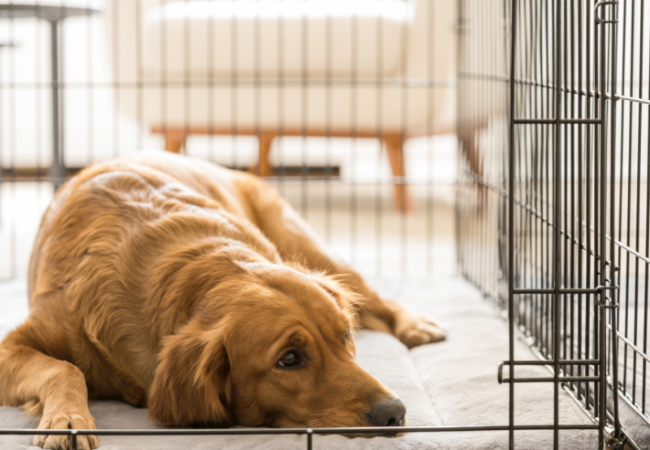Crate Train a Puppy 2025: Vet-Approved Step-by-Step Guide 🐶✨

In this article
Crate Train a Puppy 2025: Vet-Approved Step-by-Step Guide 🐶✨
By Dr. Duncan Houston BVSc
Crate training isn’t about locking your puppy up—it’s about creating a safe, calming space that helps them learn boundaries, stay safe, and settle down. Done right, it becomes their favorite nap spot, not a punishment.
I’m Dr. Duncan Houston, veterinarian and founder of Ask A Vet. Here’s how to crate train your puppy successfully, humanely, and in a way that actually works.
📦 Why Crate Train?
- Helps with toilet training and prevents accidents
- Reduces destructive chewing when unsupervised
- Builds independence and reduces separation anxiety
- Makes travel, vet stays, and grooming less stressful
📏 Choosing the Right Crate
- Should be big enough for your puppy to stand, turn, and lie down—but not oversized
- Use dividers in large crates to grow with your puppy
- Plastic travel crates or metal foldable crates both work—just add comfort
🛠️ Step-by-Step Crate Training Guide
Step 1: Introduce the Crate Positively
- Leave the door open with treats or toys inside
- Feed meals in the crate to build positive association
- Use calming scents (lavender spray, worn T-shirt) to create comfort
Step 2: Practice Short Sessions with the Door Closed
- Start with 1–5 minute sessions while you’re nearby
- Gradually increase duration over days
- Always release when quiet, not when whining
Step 3: Use Crate During Downtime and Nighttime
- Crate for naps, calm time, or when unsupervised
- Keep the crate in your bedroom at night for easier settling
Step 4: Build Independence
- Practice short departures and arrivals with no drama
- Leave puzzle toys or frozen Kongs in the crate
- Gradually build up alone time to 1–3 hours
🚫 Common Mistakes to Avoid
- Using the crate as punishment
- Leaving your puppy inside too long (no more than 1 hour per month of age)
- Forcing them inside or closing the door suddenly
- Responding to whining with immediate release (it reinforces noise)
🛌 Make the Crate a Safe Haven
- Line with vet-safe bedding or crate mats
- Use snuffle toys or lick mats for enrichment
- Play relaxing music or white noise nearby
⏰ Toilet Break Schedule While Crate Training
- Immediately after waking, playing, or eating
- Every 1–2 hours for young puppies
- Take them to the same spot and reward immediately
🔗 Helpful Tools from
- Dual Pocket Dispenser – Bring treats + poo bags on crate-to-outdoor potty trips
👩⚕️ When to Ask for Help
- Puppy screams in the crate after multiple positive attempts
- Signs of anxiety (drooling, excessive pacing, refusal to enter)
- Crate accidents despite frequent breaks
📋 Summary Excerpt
Crate training isn’t confinement—it’s comfort. A vet shows you how to crate train your puppy step-by-step so they love their crate (and you love the results).
❓ FAQs
-
Q: How long can my puppy be in the crate?
A: 1 hour per month of age (e.g., 2-month-old = 2 hours). Never exceed 4 hours during the day. -
Q: Should I crate my puppy at night?
A: Yes. It helps with toilet training, settling, and early separation conditioning. Keep the crate nearby at first. -
Q: What if my puppy cries in the crate?
A: Wait until they are quiet before releasing. If persistent, go back a step and reinforce calm crate time more gradually.






